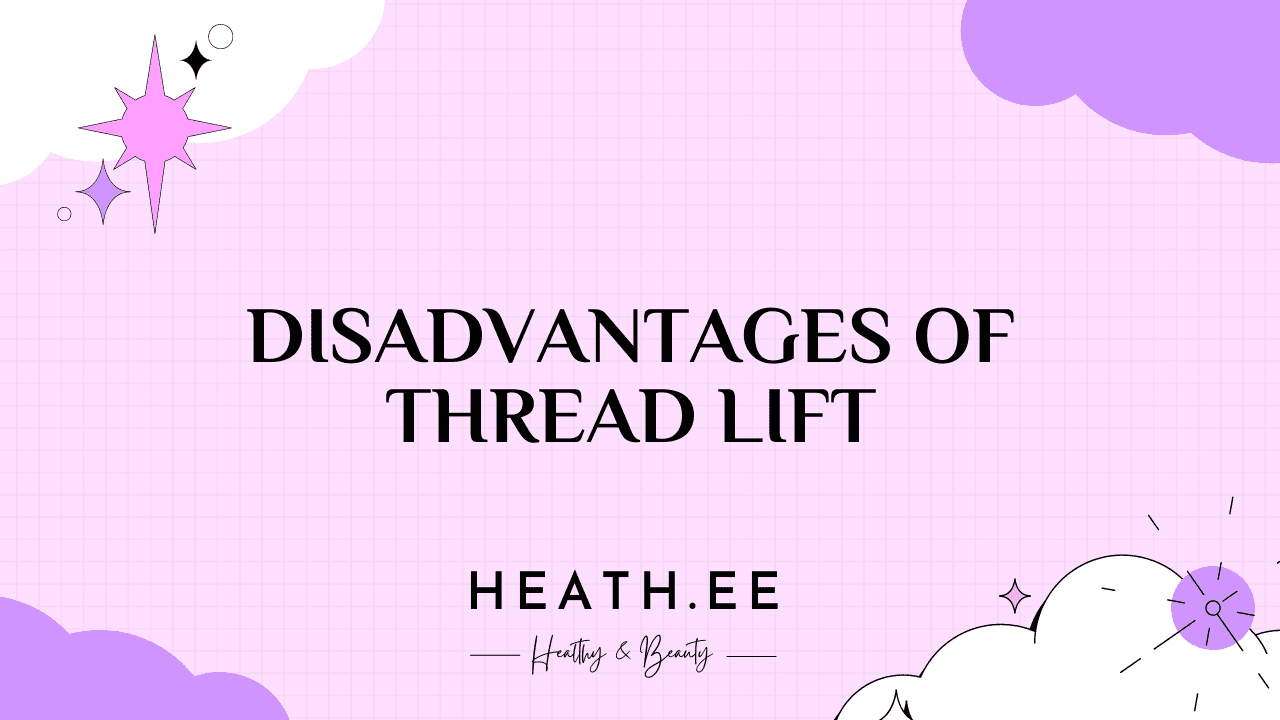Thread lifts are a popular cosmetic procedure that can help reduce the appearance of wrinkles and sagging skin. However, like any treatment, there are risks and potential drawbacks to consider before undergoing a thread lift. In this comprehensive guide, we’ll discuss the potential disadvantages of thread lift and provide tips on how to make the best decision for your needs.
What is a Thread Lift?
A thread lift is a minimally-invasive cosmetic procedure that uses special sutures to lift and tighten the skin. The procedure is typically done on the face, though it may also be used on the neck and other areas of the body. During the procedure, the surgeon inserts the sutures into the skin and then pulls them tight to lift and tighten the skin.
The sutures are made of a material that is designed to dissolve over time, which helps to maintain the results of the procedure. The results of a thread lift can last for several months, though they may not be as long-lasting as more invasive procedures like a facelift.

What Are the Disadvantages of Thread Lift?
Before undergoing any cosmetic procedure, it’s important to understand the potential risks and disadvantages. Here are some of the potential disadvantages of thread lift:
1. Results May Not Be Long-Lasting
One of the potential disadvantages of thread lift is that the results may not be as long-lasting as more invasive procedures like a facelift. The sutures used in the thread lift procedure dissolve over time, which means that the results may not last as long as those of more invasive procedures.
2. Risk of Infection
As with any surgical procedure, there is a risk of infection with a thread lift. Infections can be serious and can lead to further complications, so it’s important to take all necessary precautions to reduce the risk of infection.
3. Risk of Scarring
Another potential disadvantage of thread lift is the risk of scarring. While the sutures used in the procedure are designed to be as small and discreet as possible, there is still a risk of scarring.
4. Risk of Nerve Damage
The thread lift procedure involves inserting sutures into the skin, which can lead to nerve damage. Nerve damage can cause a variety of symptoms, including numbness, pain, and tingling.
5. Risk of Allergic Reaction
The sutures used in the thread lift procedure are made of a material that is designed to be biocompatible. However, there is still a risk of an allergic reaction to the material. It’s important to discuss any potential allergies with your doctor before the procedure.
6. Cost
Thread lifts can be expensive, and the cost can vary depending on the number of sutures used and the area of the body being treated. In some cases, insurance may cover the cost of the procedure, but it’s important to check with your insurance provider to determine what is covered.
7. Not Suitable for Everyone
Thread lifts are not suitable for everyone. People with certain medical conditions, such as diabetes, may not be able to undergo the procedure. It’s important to discuss your medical history with your doctor to determine if a thread lift is right for you.
8. Pain and Discomfort
The thread lift procedure can cause pain and discomfort. The pain and discomfort can vary depending on the area of the body being treated and the number of sutures used.
9. Results May Not Be Noticeable
The results of a thread lift may not be as noticeable as those of more invasive procedures. In some cases, the results may not be noticeable at all. It’s important to discuss your expectations with your doctor before undergoing the procedure.
Conclusion
Thread lifts can be a great option for those looking to reduce the appearance of wrinkles and sagging skin. However, it’s important to understand the potential risks and disadvantages of thread lift before undergoing the procedure. By understanding the potential risks and drawbacks, you can make an informed decision about whether or not a thread lift is right for you.



